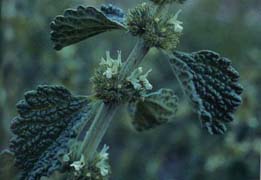Lorn Brace-Wessel
Healing Gardens
Weekly Reflection #3
The more I learn about the plant world, the more I realize there is so much more to learn. All of the direct work with plants so far in Healing Gardens has, and will continue to my make relationship with the plant world that surrounds us much more intimate. I am a very hands on, interactive learner, and the structure of the workshops and projects has helped me greatly to gain new understandings of the way nature works: One of the most impressive labs so far has been the twig identification; I had no idea that plants could be identified so easily without their leaves and flowers/fruit. The hands-on work in the garden is extremely stimulating to the mind as well. Not only are we actively learning about the structures of plants, how to set up a working garden, which plants can benefit from each other, which plants have medicinal value, etc., there is an amazing satisfaction that can’t be gotten anywhere else than working with the earth. The journaling also gives us a chance to sit back and observe nature occurring around us, something that most people don’t do very often.
My understanding of the structure of plants has changed quite a bit as well. It’s interesting to think of them like living animals. They have different ways of doing things sometimes, but a lot of their structures have the same functions as mechanisms in our bodies. The xylem and phloem act as veins and arteries, delivering water and nutrients throughout the plant. The xylem and phloem form into vascular bundles, which act as a skeleton-like structure, keeping the plant from falling over. The vascular bundles are surrounded by pith and cortex, which acts as a cushy barrier allowing the plant to bend still; this is much like our muscles. The whole thing is wrapped in an outer skin called an epidermis, just like us. The epidermis is coated in stomata, which act as mouths or lungs, dealing with the exchange of gases like oxygen, carbon dioxide and water vapor. Plants and humans alike even go through a ‘pubescent’ stage, which is marked by the growing of hair on certain parts of the epidermis.
Learning about the nervous system and how certain plants can affect it is incredibly interesting. There’s no way you can deny our relationship to plants when certain plants have certain chemicals that happen to just fit like puzzle pieces into receptors in our brains. It is fun and very informational to experiment with plants and figure out what effects they have on the system. I have chosen Kava Kava for my experimentation, and have found it to be quite pleasant. In low doses it can be very relaxing and calmative. It is very soothing to have a small amount in times of high stress to calm down. In higher doses, it starts to be similar to alcohol, except slightly more euphoric and more clear-headed. The most noticeable effect immediately is the numbing of the tongue upon ingestion.
